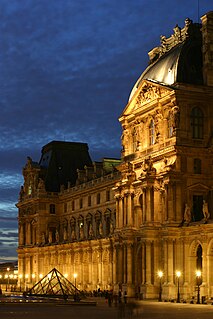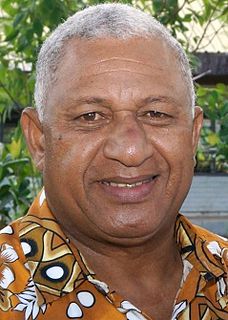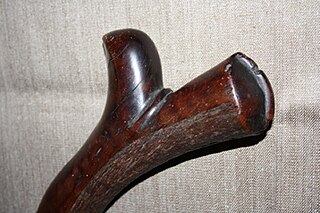This is a list of museums in Fiji.
This is a list of museums in Fiji.

Suva is the capital of Fiji, and its largest metropolitan city. It is located on the southeast coast of the island of Viti Levu, in Rewa Province, Central Division.

An art museum or art gallery is a building or space for the display of art, usually from the museum's own collection. It might be in public or private ownership and may be accessible to all or have restrictions in place. Although primarily concerned with visual art, art museums are often used as a venue for other cultural exchanges and artistic activities, such as lectures, performance arts, music concerts, or poetry readings. Art museums also frequently host themed temporary exhibitions, which often include items on loan from other collections.
This gallery of sovereign state flags shows the national or state flags of sovereign states that appear on the list of sovereign states. For other flags, please see flags of active autonomist and secessionist movements, flags of extinct states and gallery of flags of dependent territories. Each flag is depicted as if the flagpole is positioned on the left of the flag, except for those of Iran, Iraq and Saudi Arabia which are depicted with the hoist to the right.

A Lali is an idiophonic Fijian drum of the wooden slit drum type similar to the Tahitian Pate of Tahiti and Samoa found throughout Polynesia. It was an important part of traditional Fijian culture, used as a form of communication to announce births, deaths and wars. A smaller form of the Lali drum is used in music. Lali drums are now used to call the people of an area together, such as church services; the Lali is also used to entertain guests at many hotel resorts. The Lali drum is made out of wood and played with hands but, is most commonly played with sticks which are made out of softer wood so as not to damage the Lali. Historically, a larger and smaller stick were used together when playing the Lali.

Drua, also known as Na Drua, N'drua, Ndrua or Waqa Tabu, is a double-hull sailing boat that originated in the south-western Pacific islands. Druas do not tack but rather shunt. Both ends of each hull are identical, but the hulls are of different sizes and the smaller one is always sailed to windward. The main differences, compared to proas, are that the hulls have a symmetric U-form profile, and a second hull is used instead of an outrigger. When a float (cama) is used in place of the smaller hull, the craft is called a camakau.
The Fijian double canoe was the largest and finest sea-going vessel ever designed and built by natives of Oceania before contact with Europeans.

General elections were held in Fiji on 17 September 2014, to select the 50 members of the Fijian parliament.

Virisila Buadromo is a Fijian political activist and former journalist, who was the executive director of the Fiji Women's Rights Movement (FWRM) from 2001 to 2015. She used to be the news director for FM96.

The Museum of Archaeology and Anthropology, also known as MAA, at the University of Cambridge houses the University's collections of local antiquities, together with archaeological and ethnographic artefacts from around the world. The museum is located on the University's Downing Site, on the corner of Downing Street and Tennis Court Road. In 2013 it reopened following a major refurbishment of the exhibition galleries, with a new public entrance directly on to Downing Street.

The Sydney International Exhibition was established headed by Lord Augustus Loftus and took place in Sydney in 1879, after being preceded by a number of Metropolitan Intercolonial Exhibitions through the 1870s in Prince Alfred Park.
Michael "Michel" Cliff Tuffery is a New Zealand artist of Samoan, Tahitian and Cook Islands descent. He is one of New Zealand's most well known artists and his work is held in many art collections in New Zealand and around the world.
Magimagi is a fibrous product made from coconut husk.

The i-sala is a traditional Fijian headdress, similar in shape to a headscarf or turban, and part of the traditional attire of the chiefly and priestly classes of the islands of Fiji as a sign of rank. Other variant of the name include sala, i-zinu, i-uso or i-uho, vauvau or paupau and masi turban. I-sala or ai Sala literally means "wrapper or envelope" in the Fijian language.
The Ula or I Ula Tavatava is a throwing war club from Fiji.

The Gata or Gata waka is a war club from Fiji.

A Sali or Cali or Tebetebe is a war club from Fiji.

A Culacula is a paddle war club from Fiji.

A bulibuli or vunikau bulibuli is a fijian war club.
Joana Monolagi is a Fijian artist and masi weaver, whose work is in the collection of Auckland Art Gallery. She was awarded the Creative NZ Pacific Heritage Art Award in 2015, recognising her work in supporting art and culture, her role as Fijian coordinator for the Pasifika Festival, and her own unique artistic practice.
Ema Tavola is an artist, curator, arts manager and advocate using art to centralise 'Pacific ways of seeing'.